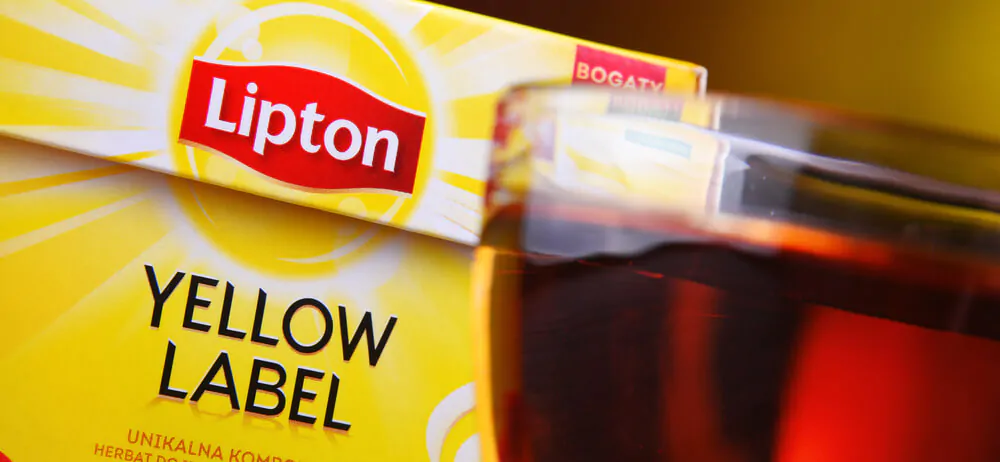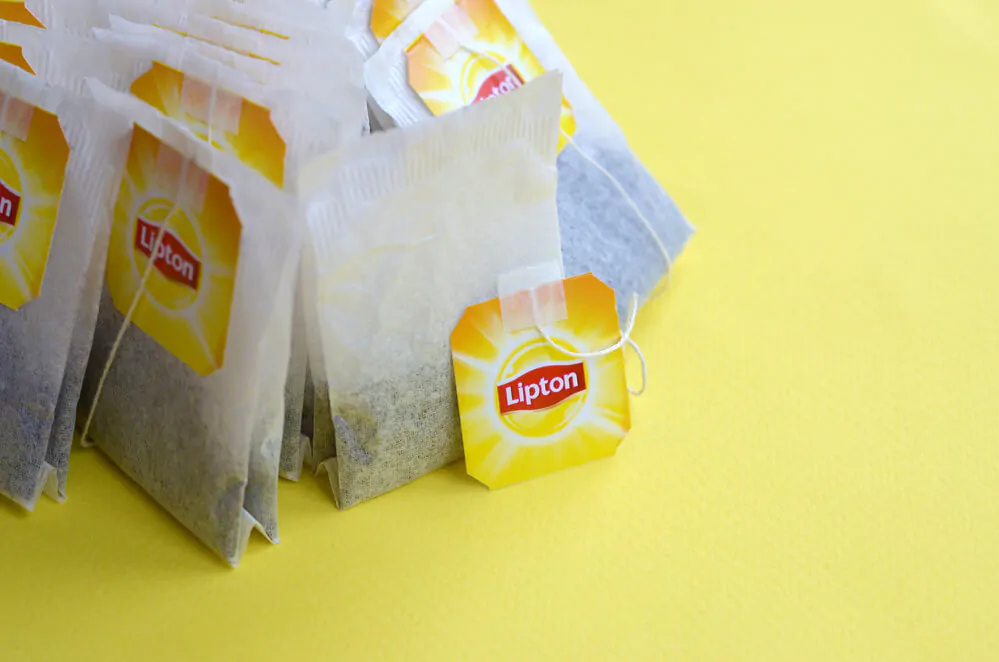Lipton tea is one of the most renowned tea brands, so what is Lipton’s target market, and why is it such a widespread brand? Read on to find out.

Speaking of the world’s best high-end tea brands, Lipton may not be the first name to pop into your mind. However, there’s no denying that Lipton is still a leader in the tea market, given its affordable price and popularity.
I grew up with Lipton. During the first years of my life, Lipton Yellow Label was the only thing I was familiar with.
Not until recently did I find out Lipton has developed 20 different products ranging from green tea, black tea, and oolong to instant iced tea. That leads to another question: Why is Lipton so popular, and what is its strategic target market?
After exceeding 900 million dollars in beverage sales as of 2021, Lipton’s target market aims at the middle-income class across all age groups. Lipton is popular in Europe, North America, Asia, and the Middle East, spanning over 110 countries. Read out to learn more about the history of Lipton and what makes it so popular.
The History Of Lipton Tea

It all started in 1890 with Sir Thomas Lipton, the father behind this British tea brand. Before Lipton, tea was still considered a household luxury. And with a significant number of the middle working class in England, it became a bright opportunity for Lipton to become even richer.
So Lipton decided to acquire five bankrupted tea fields in Sri Lanka and revived the abandoned plants in the central highlands to produce rich, savory, mellow, and mouthful tea to support his brand. By cutting out middlemen, Lipton could sell easy-to-access tea weighed and sold in bags at only 30 cents a pound.
After this game-changing decision, loose-leaf tea was no more a luxury. Lipton has flipped the entire tea-trading industry in England. Each Lipton box was sealed and weighed the same from package to package. And therefore, he eliminated customers’ doubt when purchasing tea in folded paper packages previously at stores.
It was not until the passing of Sir Thomas Lipton that the colossal British-Dutch multinational Unilever finally purchased the brand.
What Kind Of Tea Is Lipton?
A rumor claims Lipton tea is not made of “real” tea. However, the tea leaves used in making Lipton tea bags are still derived from the leaves of Camellia sinensis, making it a true tea. Lipton tea bags appear in a wide range, including black tea, green tea, oolong, and Pu-erh.
The tea bag is the main product that contributes to the brand’s reputation. But that’s not all. Combining good-quality tea leaves of various kinds, Lipton has introduced a heap of flavors and blends for all types of tea drinkers.
For me, tea bags and loose-leaf tea are the top choices that inject my lazy morning with an aromatic warmth to get me started for the day. Besides that, its ready-to-drink lemon iced tea also comes in handy whenever I need something quick and tasty after a long badminton session or between the breaks.
Each tea bag contains tea dust and fanning, which are tiny bits of tea created after the whole tea leaves are broken when falling into the bottom of the pile. Lipton tea bags are not targeted at higher-end customers due to the absence of wholesome flavors and nutritional benefits compared to loose-leaf tea. But in exchange, the price is much lower.
Why Is Lipton Popular?

Affordable prices and ease of use are some of the top defining reasons that shape the brand’s popularity.
As mentioned earlier, tea was a drink for the wealthy social class before Sir Thomas Lipton created his own brand and changed the tea-drinking game. As soon as Lipton came in, he acquired plenty of tea fields and plants to cut out middlemen who were replaced by the car system.
After the final acquisition in 1972, Unilever and PepsiCo joined forces to game up the bottling expertise and paved the way for the growth of Lipton. Today, under the management of Pepsi Lipton International, Lipton tea has become one of the leading choices in the segment of ready-to-drink beverages in North America.
If you love Lipton tea, you might also be interested in our Lipton tea vs. English breakfast tea guide.
How Is Lipton Marketed?
After Unilever fully acquired the ownership of Lipton, the corporation started to promote the brand using both conventional and unconventional marketing strategies.
Television commercials are still one of the prioritized tactics as part of its traditional media marketing purpose. Search for the old commercial TV ads, and you will see how Lipton brought out a sense of warmth, brightness, cheerfulness, and relaxation to inspire the palate and desire of the audience. At the end of each commercial, you embrace an attractive, interesting, and cheering memory that is always linked to the brand image.
Even today, whenever you browse through the grocery stalls chock full of bottles and cans, Lipton always appears with an inviting yellow and green look to deliver positive feelings and emotions in customers’ minds.
Speaking of non-traditional methods of marketing, Lipton is very active on every social platform to keep up with the latest digital trends. Facebook, Instagram, Twitter, and Youtube Ads are carefully selected and engineered to target the younger segment of the market as well as to find new customers.
Beyond advertising, Lipton also connects with its repeated customers with the latest updates, story-telling, and activities to stay in touch with the fan base. Last but not least, Lipton also sponsors major sports and health events such as the American Heart Association’s Life is Why program.

